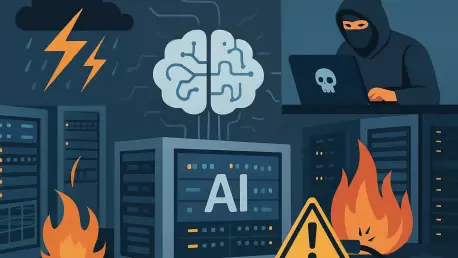Allow me to introduce Chloe Maraina, a renowned Business Intelligence expert with a deep passion for transforming big data into compelling visual stories. With her sharp expertise in data science and a forward-thinking vision for data management and integration, Chloe is uniquely positioned to shed light on the intersection of artificial intelligence infrastructure and financial stability. Today, we dive into the global boom in AI data center construction, the financial risks tied to this rapid expansion, and the broader implications for economic stability and energy demands.
Can you walk us through what’s fueling this unprecedented surge in data center construction for AI?
Absolutely. The explosion in data center construction is largely driven by the promise of AI—think machine learning, natural language processing, and other transformative technologies. Companies are betting big on the idea that AI will revolutionize industries, from healthcare to finance, and they need massive computational power to train and run these models. A lot of this growth is tied to the hype, no question, but it’s also rooted in real demand for faster, more powerful systems to handle increasingly complex algorithms.
How do you interpret the Bank of England’s warnings about the financial risks associated with this data center boom?
I think their concerns are well-founded. They’re pointing out that the sheer scale of investment—trillions of dollars globally by the end of the decade—often relies on heavy borrowing. If the AI market stumbles, say through a sudden drop in demand or a tech correction, the debt load could become unsustainable for some players. It’s not just about individual companies; the ripple effects could strain lenders and even destabilize parts of the financial system.
How likely is it that data centers could become unwanted assets if AI demand slows down?
It’s a real possibility. Data centers are purpose-built for high computational loads, and repurposing them isn’t straightforward. If demand for AI processing drops—maybe due to a breakthrough that reduces compute needs or a market shift—these facilities could sit idle. That’s a big problem for investors who’ve poured in billions, expecting steady returns. We could see a scenario where these centers become expensive white elephants, tying up capital with little to no utility.
What impact is the enormous power demand of AI data centers having on the energy sector?
It’s putting incredible pressure on energy providers. AI data centers consume vast amounts of electricity, and scaling up to meet this need requires significant infrastructure investment from the energy sector. Some regions are already grappling with grid constraints, and I’m not entirely confident that all energy companies are prepared for the long haul. If supply can’t keep up, it could bottleneck the entire AI expansion, forcing delays or even shutdowns.
How significant is the risk posed by the dependency on microprocessors and rare metals for data center operations?
It’s a major vulnerability. Data centers rely on specialized hardware, which in turn depends on scarce resources like rare earth elements and metals like copper. Any disruption—whether it’s supply chain issues, geopolitical tensions, or price spikes—could slow construction or drive costs through the roof. There are efforts to innovate around these dependencies, like developing more efficient chips, but we’re not there yet. A shortage could easily derail projects and inflate budgets.
Do you think a market correction in AI could have broader economic consequences compared to past tech busts like the dot.com crash?
I do. Unlike the dot.com bust, which largely impacted tech investors and startups, AI is deeply embedded in the strategies of major enterprises across sectors. If there’s a downturn, it’s not just tech firms that suffer—think of retailers, manufacturers, and service providers who rely on AI-driven platforms. The fallout could disrupt supply chains, service delivery, and even consumer confidence, making the impact far more widespread than what we saw two decades ago.
There’s a concern that AI data center investments might be diverting funds from other critical areas, like manufacturing. What’s your perspective on this trade-off?
It’s a valid concern. When so much capital flows into one sector, other priorities—like rebuilding domestic manufacturing or investing in sustainable infrastructure—can get sidelined. In the U.S., for instance, there’s a push to bring factories back home, but if investors are chasing AI returns instead, those efforts could stall. It’s a balancing act; while AI has transformative potential, over-concentration risks neglecting other pillars of economic growth.
What is your forecast for the future of the AI data center market in light of these financial and operational challenges?
I believe we’re heading toward a period of consolidation. The current pace of expansion isn’t sustainable long-term, especially with the debt levels and resource constraints we’ve discussed. Over the next few years, I expect the market to mature, with smaller or over-leveraged players either merging or dropping out. Those who survive will likely be the ones who innovate—whether through energy efficiency, diversified revenue streams, or reduced reliance on scarce materials. But it won’t be smooth; we’re almost certainly in for some turbulence as the hype settles and reality sets in.









